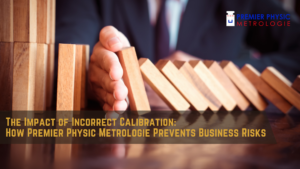In a world increasingly reliant on technology and intricate processes, precision is no longer a luxury but a necessity. At the heart of ensuring this precision lies calibration, a process that verifies and adjusts the accuracy of measuring instruments. While often perceived as a technical detail, precision in calibration has profound implications across various industries, impacting everything from product quality and safety to regulatory compliance and scientific research. This article explores the critical role of precision in calibration through real-world applications, demonstrating why even the smallest deviations can have significant consequences.
The Foundation of Trust: Calibration and Precision:
Calibration establishes a traceable link between a measuring instrument and a recognized standard, ensuring that measurements are accurate and reliable. The level of precision required in calibration varies depending on the application. However, in many critical industries, even minute deviations can lead to significant errors, compromising safety, efficiency, and quality.
Real-World Applications Where Precision Matters:
- Healthcare: Ensuring Patient Safety and Accurate Diagnoses:
- Medical Devices: From blood pressure monitors and ventilators to MRI machines and radiation therapy equipment, medical devices rely on precise measurements for accurate diagnoses and effective treatments.
- Calibration’s Role: Calibration ensures that these devices provide accurate readings, preventing misdiagnoses, overdosing, and other potentially life-threatening errors.
- Example: A miscalibrated glucose meter can lead to inaccurate blood sugar readings, resulting in incorrect insulin dosages for diabetic patients.
- Aerospace: Guaranteeing Flight Safety and Reliability:
- Aircraft Instruments: Aircraft rely on a complex network of sensors and instruments for navigation, flight control, and engine performance.
- Calibration’s Role: Calibration ensures that these instruments provide accurate data, enabling pilots to make informed decisions and maintain safe flight operations.
- Example: A miscalibrated altimeter can lead to inaccurate altitude readings, potentially causing collisions or navigation errors.
- Manufacturing: Maintaining Product Quality and Process Control:
- Dimensional Measurement: In manufacturing, precise dimensional measurements are essential for ensuring that products meet design specifications and quality standards.
- Calibration’s Role: Calibration of measuring tools like calipers, micrometers, and coordinate measuring machines (CMMs) ensures that products are manufactured within tolerance limits.
- Example: In the automotive industry, miscalibrated measuring tools can lead to the production of parts that do not fit properly, causing assembly problems and compromising vehicle safety.
- Pharmaceuticals: Ensuring Drug Quality and Safety:
- Analytical Instruments: Pharmaceutical companies rely on analytical instruments like spectrophotometers, chromatographs, and mass spectrometers to ensure the quality and purity of drugs.
- Calibration’s Role: Calibration ensures that these instruments provide accurate measurements, preventing the release of contaminated or ineffective drugs.
- Example: A miscalibrated high-performance liquid chromatography (HPLC) instrument can lead to inaccurate quantification of drug components, potentially affecting drug efficacy and safety.
- Environmental Monitoring: Protecting Public Health and the Environment:
- Air and Water Quality Monitoring: Environmental agencies rely on calibrated instruments to monitor air and water quality, ensuring compliance with environmental regulations.
- Calibration’s Role: Calibration ensures that these instruments provide accurate measurements of pollutants, enabling authorities to take appropriate action to protect public health and the environment.
- Example: A miscalibrated air quality monitor can lead to inaccurate measurements of particulate matter, potentially endangering public health.
- Energy Industry: Optimizing Efficiency and Safety:
- Power Plant Instrumentation: Power plants rely on calibrated sensors and instruments to monitor temperature, pressure, and flow rates, ensuring efficient and safe operations.
- Calibration’s Role: Calibration ensures that these instruments provide accurate data, enabling operators to optimize plant performance and prevent equipment failures.
- Example: A miscalibrated temperature sensor in a nuclear power plant can lead to inaccurate temperature readings, potentially causing overheating and safety hazards.
- Scientific Research: Ensuring Reliable Data and Valid Results:
- Laboratory Instruments: Scientific research relies on a wide range of calibrated instruments, from microscopes and spectrometers to balances and pH meters.
- Calibration’s Role: Calibration ensures that these instruments provide accurate and reliable data, enabling researchers to draw valid conclusions and publish reproducible results.
- Example: A miscalibrated mass spectrometer can lead to inaccurate molecular weight measurements, potentially invalidating research findings.
The Consequences of Inaccurate Calibration:
- Compromised Safety: Inaccurate measurements can lead to safety hazards in various industries, potentially causing accidents and injuries.
- Reduced Product Quality: Miscalibrated instruments can lead to the production of defective products, resulting in customer dissatisfaction and financial losses.
- Regulatory Non-Compliance: Inaccurate calibration can lead to non-compliance with industry standards and regulations, resulting in fines and legal issues.
- Financial Losses: Inaccurate measurements can lead to wasted resources, rework, and product recalls, resulting in significant financial losses.
- Damaged Reputation: Inaccurate measurements can damage a company’s reputation and erode customer trust.
Ensuring Precision in Calibration:
- Traceable Standards: Use calibration standards that are traceable to national or international standards.
- Certified Laboratories: Utilize accredited calibration laboratories that adhere to ISO/IEC 17025 standards.
- Regular Calibration Intervals: Establish appropriate calibration intervals based on the instrument’s usage, stability, and risk assessment.
- Qualified Personnel: Ensure that calibration is performed by qualified and trained personnel.
- Measurement Uncertainty Analysis: Perform measurement uncertainty analysis to assess the reliability of calibration results.
- Documentation: Maintain accurate records of all calibration activities.
The Future of Precision Calibration:
As technology advances, calibration techniques are becoming more sophisticated and automated. Advancements in sensor technology, data analysis, and artificial intelligence are enabling more precise and efficient calibration processes. The increasing demand for quality and safety across industries will further drive the need for precision calibration.
Conclusion:
Precision in calibration is not merely a technical detail; it’s a fundamental requirement for ensuring safety, quality, and reliability across various industries. By understanding the importance of precision and implementing robust calibration practices, organizations can mitigate risks, enhance efficiency, and build trust with their customers and stakeholders. The real-world applications explored in this article demonstrate that even the smallest deviations can have significant consequences, underscoring the critical role of precision in calibration.




